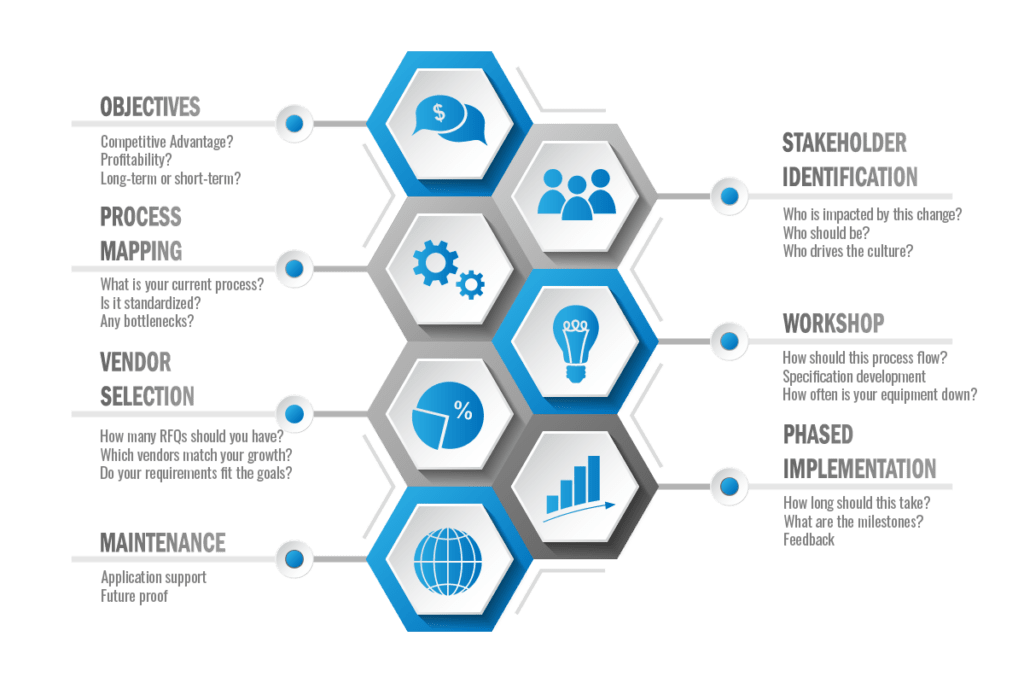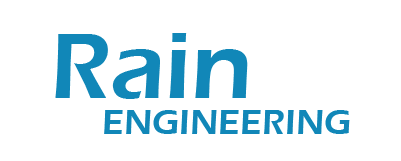At Rain Engineering, we avoid cookie-cutter solutions. We understand that each factory is unique and faces distinct challenges. We take pride in our ability to address your needs by fully immersing ourselves into your business and taking the time to understand the big picture. Think of us as an extension of your business. Our success is your success.

Understanding the goals and intentions behind our engagement is a key part of the process. Depending on the objective, there are different paths to success that will allow us to know the order of business priorities. Through our experience, process improvement can range in tactical execution and vary in definition. What might be considered as overall cost-effective and increase profitability to one person, could cost market share to another due to its impact on the customer experience? After identifying the why, we can then move to bring the right people to the table.
Some projects are doomed before they leave the initial meeting due to their lack of buy-in. Culture can destroy any presumed power to “shove change down their throat” as it takes people to run a company and people are resistant to change. Bringing the most influential people from departments impacted by the change allows not only a unique perspective, but it enables each group to feel part of that change. When people are included and invested in the change, they work harder to make it happen by ensuring they get their people on board. We get these people in a room and get them to provide process insights they would otherwise omit in a room full of people.
The only thing more painful than not implementing change is implementing the wrong change. Basing the technology and process change on one perspective dramatically lowers the success rate of any engagement. Through years of change management successes and challenges, one of the most important lessons we have learned is that people get to the same goal through different means. If there is no centralized process and each group has its own way of manufacturing products, all of those perspectives need to be included. Process mapping enables us to get a holistic view of all processes so we find a universal process if it exists. When that is not possible, we find a way to address the bottlenecks of each respective group.
A good way to avoid roadblocks in approval is to plan for them. In our workshop, we measure the impact of the stated objective as well as the cost of the current state challenges. This allows us to understand the financial impact and provide cost justification to avoid future resistance. Afterward, we get individual solution recommendations, then bring those to the group. When potential solutions are communicated to the group anonymously, it is easier to gauge which is the best solution instead of who holds the most political capital. A final part is to create solution specifications to save time in the vendor selection process.
While vendors try to deliver the best solution they can, they are limited by their loyalty to a specific solution, we do not share that limitation. Vendor bias can limit the degree to which we achieve our objectives and result in integration problems. Our belief in well-crafted selection criteria eliminates the need to extend the project due to RFQs. Based on the specifications established in the workshop phase, we utilize a unique approach to ensure that the solution provided is both aligned with your existing process and expansive enough to accommodate your business as it expands.
Plans should adjust to performance expectations. An inflexible plan can wreak havoc on a project’s effectiveness and client satisfaction. While we are the experts on implementation, you are in the driver’s seat when it comes to milestones and performance satisfaction. Our best clients are there to provide feedback on achievement milestones. In this phase, we collaborate on how much change the organization can stand without becoming a distraction that impacts revenue. We operate in sprints and within each sprint, there is a milestone offering an opportunity for input from the stakeholders. Ultimately, we end with a solution that fits the established objectives, in a way that does not substantially disrupt business operations.
Emergency maintenance is costly, disruptive, and unnecessary. When change is implemented without consideration of maintenance and organization, it leads to bigger problems down the road. Our goal is to ensure that during the project implementation we clean up the shop and organize auxiliary items in a way that makes it easy to adjust any problem that might arise. Additionally, this phase allows us to ensure that things are working as designed and diagnose the root causes of problems that do arise. Lastly, translating data from technology in a way that is easily decoded by ERP requires a plan. That plan must be carefully thought out and coordinated with the new process implementation. This ensures that additional time is not wasted when updates are required or portions of the technology fail.
